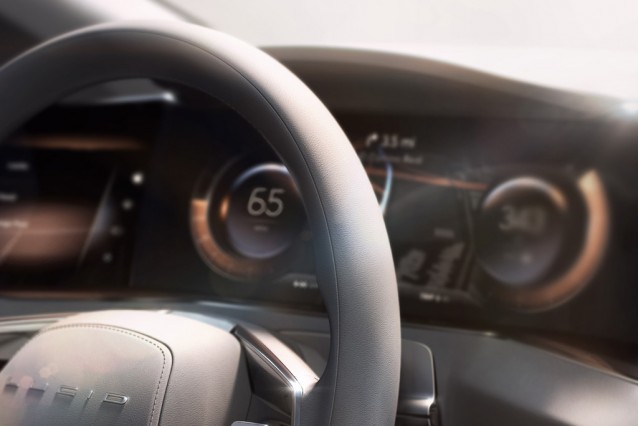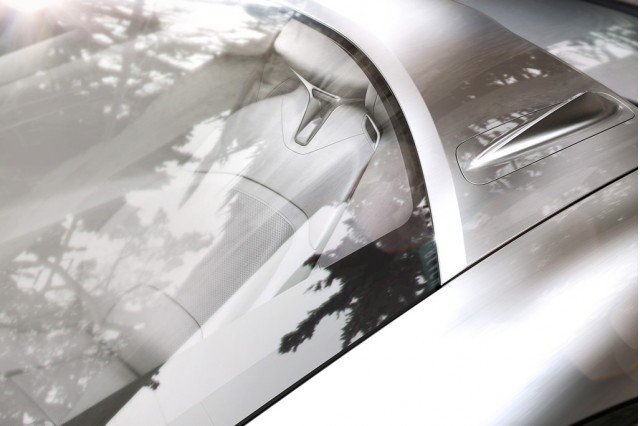If things go to plan for a pervasive ultra-fast charging network in Europe, by 2020 automakers will make publically recharging electric cars as convenient as a fuel station stop.
That’s the takeaway from an ambitious collaboration announced today by BMW Group, Daimler AG, Ford Motor Company and Volkswagen Group with Audi and Porsche.
As they anticipate a profound ramp up in plug-in electric cars starting now, the major automakers say they are investing in an initial 400 ultra-fast charging 350-kW sites along critical highways.
“By 2020, consumers should have access to thousands of high-powered charging points,” said Ford on behalf of fellow collaborators in outlining the undertaking.
While estimated recharge times were not given – and ultimately will depend on how large a battery needs to be filled – the up-to 350 kW charge standard is significantly above anything now in service, including Tesla Superchargers.

Tesla cars cannot presently use CCS fast chargers. They can use CHAdeMO chargers via an adapter that
Tesla sells for $450 in the U.S. That adapter is limited by specification to CHAdeMO’s existing 125A specification (really 62.5 kW but sometimes called 50 kW) specification.
Indeed, the planned faster network using a competing charge standard, while not stated by the collaborators, appears to be a direct response to Tesla’s Supercharger network, Tesla has also announced aggressive EV expansion plans and recently said it plans a new joint Gigafactory battery plant and car assembly plant in Europe.
On that note, the collaborators have agreed to use the Combined Charging System (CCS) standard, with the aim of being as inclusive – not exclusive – of as many EV makers as possible, assuming they also design cars compatible with this standard.

At the Paris Motor Show, Daimler CEO Dieter Zetsche introduced its new EQ brand. The move parallels ongoing initiatives by VW Group and BMW.
The automakers, who will be equal partners in the collaboration, say their next-generation battery electric vehicles will be optimized to take advantage of the quick fill, and they invite other automakers to join in.
“Vehicles engineered to accept the full power of the charge stations can recharge brand-independently in a fraction of the time of today’s battery electric vehicles,” said Ford on behalf of the collaborating manufacturers. “The network is intended to serve all Combined Charging System-equipped vehicles to facilitate battery electric vehicle adoption in Europe.
Unstated is exactly how much money all this will cost.
“The automobile manufacturers intend to make substantial investments to create the network, underscoring each company’s belief in the future of electric mobility,” said Ford.
Otherwise, the chief executives of the different brands all gave their take on why they are doing it, led off with BMW which has its i-brand represented by the i3 and i8.
“This high-power charging network provides motorists with another strong argument to move toward electric mobility,” said Harald Krüger, chairman of the board of management of BMW AG. “The BMW Group has initiated numerous public charging infrastructure projects over the last years. The joint project is another major milestone clearly demonstrating that competitors are combining forces to ramp up e-mobility.”
BMW was one of the companies who in October said it wants 15-25 percent of its sales coming from plug-in electrified cars. While it got an early head start on electrification, it’s caught criticism for being slow to develop new i-series models faster.
Today’s news indicates it has not at all lost the vision, which in turn is shared by rival Daimler AG which in October announced its EQ brand, and plans for 15-25 percent of all sales to be plug-in by 2025.

Generation EQ.
“The breakthrough of e-mobility requires two things: convincing vehicles and a comprehensive charging infrastructure. With our new brand EQ, we are launching our electric product offensive: by 2025, our portfolio will include more than 10 fully electric passenger cars. Together with our partners, we are now installing the highest-powered charging infrastructure in Europe,” said Dr. Dieter Zetsche, chairman of the board of management of Daimler AG and head of Mercedes-Benz Cars. “The availability of high-power stations allows long-distance e-mobility for the first time and will convince more and more customers to opt for an electric vehicle.”

Audi e-tron Quattro.
And not to be forgotten is the VW Group, which intends 30 battery electric cars spread among its 13 brands by 2025, and said this year it wants 20-25 percent of sales coming from plug-in cars by 2025.
Brands Americans know, aside from VW, are Porsche and Audi.
“We intend to create a network that allows our customers on long-distance trips to use a coffee break for recharging,” said Rupert Stadler, chairman of the board of management of AUDI AG. “Reliable, fast charging services are a key factor for drivers to choose an electric vehicle. With this cooperation, we want to boost broader market adoption of e-mobility and speed up the shift toward emission-free driving.”
The one U.S. based carmaker doing business in Europe that’s collaborating in the charging network initiative, Ford, says it too is on board, as it otherwise reinvents itself into a mobility company.
“A reliable, ultra-fast charging infrastructure is important for mass consumer adoption and has the potential to transform the possibilities for electric driving,” said Mark Fields, president and CEO, Ford Motor Company. “Ford is committed to developing vehicles and technologies that make people’s lives better, and this charging network will make it easier and more practical for consumers across Europe to own electrified vehicles.”

“There are two decisive aspects for us: ultra-fast charging and placing the charging stations at the right positions,” said Oliver Blume, chairman of the executive board of Porsche AG. “Together, these two factors enable us to travel in an all-electrically powered car as in a conventional combustion engine vehicle. As an automobile manufacturer, we actively shape our future, not only by developing all-electrically powered vehicles, but by building up the necessary infrastructure as well.”
The carmakers
call the initiative an “unprecedented collaboration” but more will need to be seen. Plans are to get started in 2017 and appear to add substance to the push to make EVs mainstream.
These forces backed by threat to the ecosystems and environments of the world are the lever that appears to be moving formerly reluctant players to embrace electrification.
These are truly unique times in the history of motorized transportation.



















